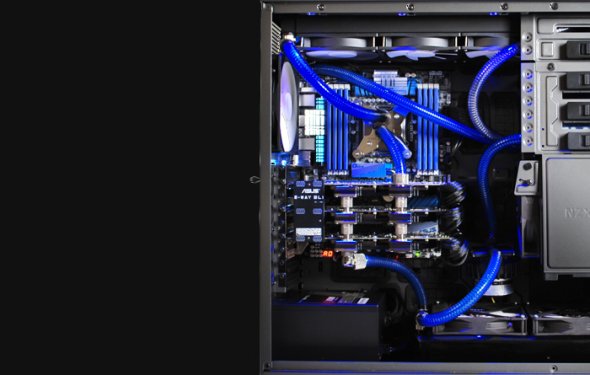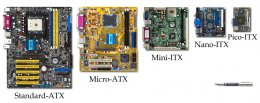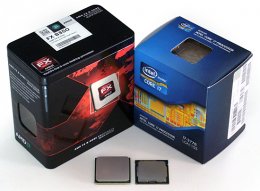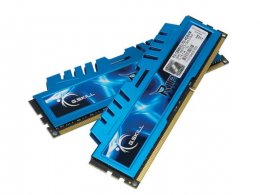Build your own gaming computer kit


Computer Builder's Guide
A well balanced PC is the most sought after of enthusiast and casual users alike. Not only does a balanced PC build provide you with optimal performance but you can remove the common mistakes and unnecessary costs new PC builders make. When building a PC it is important to keep in mind the goal and purpose of your build. Straying from this can result in costly errors. In this article you will learn about each essential PC component and how to make the best choice for your application.
Computer Case
Every build should start off by choosing a case. Though seemingly mostly a matter of preference, choosing the right case can mean the difference between limiting yourself from building a powerful gaming PC or a simple media center PC. Cases come in three sizes, mATX, ATX, Full ATX. As a general rule of thumb mATX is used for media centers, full ATX for enthusiast gaming PCs, and ATX mid-towers for everything else. Larger cases are capable of dissipating heat at faster rates so keep that in mind when making your decision.
Motherboard
The motherboard is the backbone or exoskeleton of your computer build. The motherboard interfaces and holds together many of the components in your system. Essentially, it acts as the middle man when components in your system must communicate with one another via the chipset, The chipset is responsible for all the special features your motherboard is capable of such as overclocking. If this is something that interests you be sure to check if your chipset supports this functionality. When picking a motherboard its important to think about what expansions you make in the future as well so check the specs for the number of USB, PCI-E, and SATA ports. Most importantly, each motherboard is limited to a socket type. This socket determines which CPU you will be able to install. If you have a particular processor in mind it is best to check if this chip is supported motherboard.
CPU
The processor is the brains of the operation and handled the raw number and byte crunching power of your system. A high performance cpu is required for any high calculation applications such as gaming and video rendering/encoding/transcoding. For a low-end system I recommend a dual core chip and for anything else a quad core chip should suffice. If you are heavily into gaming or encoding video then I recommend a minimum of an Intel i5, i7, or an AMD 8 series chip such as the AMD 8350.
 RAM
RAM
The amount of RAM in your system will dictate the amount of multi-tasking you will be capable of. RAM comes in many difference speeds and capacities however for most capacity is the only concern and that is what I will address in this section. For a typical modern PC 4GB is recommended. This will allow you to run multiple everyday applications such as browsers, media players, and office suites. If you're looking to do gaming or video editing I recommend going with 8GB - 16GB of memory. This will allow you to work with multiple instances of high quality documents such as HD video, and hi res textures.
Storage
PC storage has four main properties, there are type, speed, capacity, and size. Each of these properties will affect the performance of your PC in some way. The most important of the 4 is the speed. When it comes to speed you are pretty much limited to the choice between a traditional hard drive or the newer solid state drives.
Solid State Drive
If you are looking for the fastest solution possible then solid state is the choice for you. With no moving parts you will be able to read and write to files with blazing fast speeds.
Hard Drive
A traditional hard drive will get you the most bang for your buck. Although slower than solid state drives, hard drives have become more refined in recent years and you can still achieve decent transfer speeds.
If you are having a difficult time choosing between the two... don't. You can install both a solid state and hard drive. It is common practice to load your important software such as the OS and frequently used applications onto the smaller solid state drive and everything else onto the hard drive.
Capacity
 For a modern computer it is recommended to go with a storage space of at least 1 Terabyte (1 TB) . A 500 GB should suffice for most people but the price difference between the two is negligible and you'd be robbing yourself to choose otherwise.
For a modern computer it is recommended to go with a storage space of at least 1 Terabyte (1 TB) . A 500 GB should suffice for most people but the price difference between the two is negligible and you'd be robbing yourself to choose otherwise.
Power Supply
Choosing a power supply should be the last thing done as the wattage required is largely determined by the components installed in your system, mainly - the video card. For a mid-range system we recommend a 500 watt, 750 watt for an enthusiast system, and beyond for more elaborate gaming systems.
FAQ
In response to the increased amount of questions from users who're building computers, a Q&A was destined to help everyone decide on desktop components. In this version of the Q&A I will be covering choosing the main components (CPU, Mobo, and Memory), a Q&A for Video, Sound, and Storage devices will be covered later. As with most Q&A's, I'll try to include as many answers as possible.Choosing Desktop Components
Q). Which Processor should I go with, AMD or Intel? A). While this can be debated and go on for days on without anyone agreeing with each other, the answer is simple, if you're on a low budget of around $150 or less, the logical solution would be AMD as their low end models pack more bang for the buck compared to Intel's model. If you have a budget of $150 or more to spend on the CPU alone, it's hard to choose between Intel and AMD, but my suggestion would be Intel as their new "C" (ex. 2.4C) feature an 800 MHz FSB (Front Side Bus) and Hyper Threading technology which reduces system lag when your system is on full load.
Q). Ok, so I've chosen to go with AMD, which model should I go with?
A). Currently AMD's Athlon XP 2500+ (1.8 GHz) Barton is a great bargain with it's 512K of L2 cache and 333 MHz FSB and can be had for $109.99. With the Barton 2500+ there should be a noticeable speed improvement in games and applications. The downside of this is the Barton's require a 333 MHz FSB supporting motherboard which is problematic if you're upgrading from an older Athlon/Athlon XP.
If you have an older main board that only supports 266 MHz FSB and want to upgrade, the other solution would be the Athlon XP 1700+ (1.47 GHz) for $55.99 or 2000+ (1.67 GHz) for $69.99.
Q). Ok, I have the money to spring on an Intel system, which speed grade should I go with?
A). This is hard to answer depending on how much money you have to spend. For the most bang for buck, the 2.4B/2.4C would be the most bang for the buck while the 3.2C will be the fastest and costliest. If you were just looking for something for everyday applications, the 2.4/2.6C would be your best bet as they hit the sweet spot for pricing.
Q). Now that I've chosen a processor, which motherboard should I go with?
A). Motherboards are a touch choice and it's hard to recommend any specific motherboard for a processor, thus I'll give suggestions to help you in choosing the right product.
If you want to go with AMD, there're a few chipsets to choose from. The main chipsets for the Athlon XP are NVIDIA's nForce 2 Ultra 400, nForce 2 400 (Single Channel), VIA KT400/KT400A, KT600, KM266A, Silicon Integrated System's (SIS) 745FX and 748.